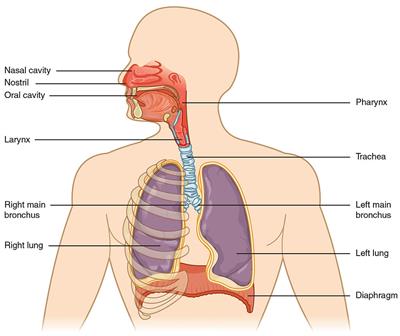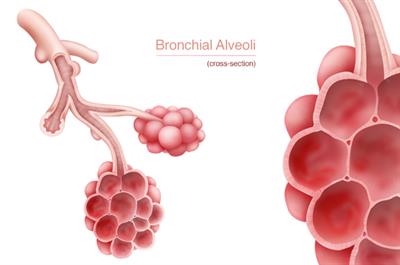
PUMPA - SMART LEARNING
எங்கள் ஆசிரியர்களுடன் 1-ஆன்-1 ஆலோசனை நேரத்தைப் பெறுங்கள். டாப்பர் ஆவதற்கு நாங்கள் பயிற்சி அளிப்போம்
Book Free DemoIntroduction
At certain times when we are running late to catch a bus or train, we run fast. Once when we stop, we notice that we breathe heavily.
Have you ever wondered that why are we breathing heavily at times like these? To know this, first, we have to know that why do we breathe.
Breathing is a part of the process of respiration.
In this topic, we shall discuss the process of respiration.
Respiratory system
The system involved in the exchange of respiratory gases and helps in breathing is known as the respiratory system.
Humans respiratory system consists of nostrils, nasal cavity, pharynx, larynx, trachea, bronchi, and lungs. It also helps in the movement of air inside and outside of the body.
Important!
Epiglottis is a flap-like structure that prevents the entry of food into the windpipe.

Human Respiratory System
Nostrils
These are the two openings found at the end of the nose. Air is inhaled and exhaled through the nostrils.
Nasal cavities
It is a large space behind the nose and is filled with air. In these cavities, the temperature and the humidity of the air we breathe are regulated.
Larynx
It is also known as the voice box as it is the organ involved in the production of sound. It is the structure that connects the throat (pharynx) to the trachea.
Trachea
It is also known as the windpipe as it serves as the passage for air. The trachea is a tube that is supported by cartilaginous rings. It connects the pharynx and larynx to the lungs, moistens and warms the air before it passes into the lungs.
It finally divides into the right and left bronchi and enters the lungs.
Bronchi
It is a structure that serves as the main passageway to the lungs.
Lungs
These are the most important respiratory organs. They are found in the chest cavity. Inside the lungs, the left and the right bronchi divide further and end in small air sacs called alveoli. The lungs are covered by a double-layered membrane known as the pleura.
The diffusion of gases such as and occurs across the alveolar membrane.
Important!
Each lung has about \(300\) million alveoli or air sacs.

Bronchi with alveoli
Pathway of inhaling air
\(\text{Nostrils}\)
\(\downarrow\)
\(\text{Nasalcavity}\)
\(\downarrow\)
\(\text{Pharynx}\)
\(\downarrow\)
\(\text{Larynx}\)
\(\downarrow\)
\(\text{Trachea}\)
\(\downarrow\)
\(\text{Bronchus}\)
\(\downarrow\)
\(\text{Bronchiole}\)
\(\downarrow\)
\(\text{Alveolus}\)
The air that we inhale through the nostrils go to the nasal cavity, then to the pharynx, the larynx, the trachea, the bronchus, the bronchiole and finally the alveoli inside the lungs.
Types of respiration
The exchange of gases through the respiratory system involves three different processes as follows:
- External respiration: It is the process that involves the intake of from the air and the release of from the lungs through the nostrils.
- Internal respiration: In this process, the circulatory system transports and to and from the all parts of the body i.e., it transports from the lungs to the all the parts of the body and from the body parts to the lungs.
- Cellular respiration: It is the process in which cells take in and release .
When a person yawns, he takes in less amount of and give out more amount of .
Reference:
https://upload.wikimedia.org/wikipedia/commons/thumb/2/2a/2301_Major_Respiratory_Organs.jpg/1024px-2301_Major_Respiratory_Organs.jpg
https://www.flickr.com/photos/mattdanko/3230072122